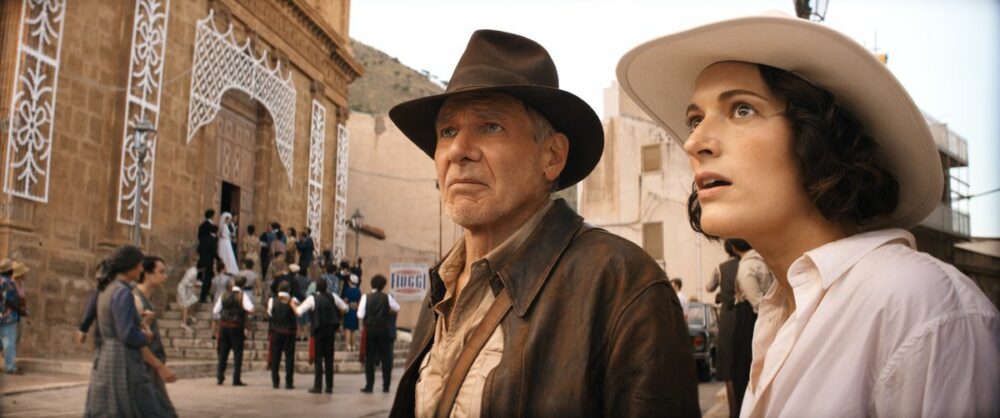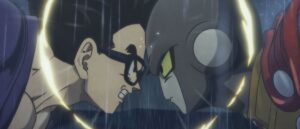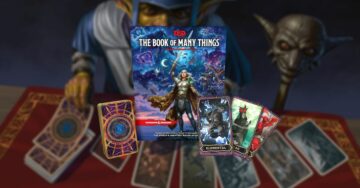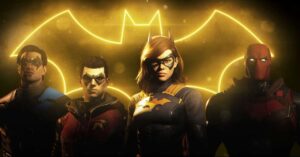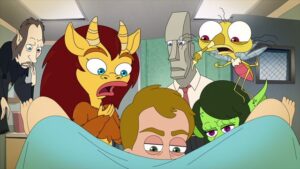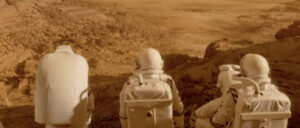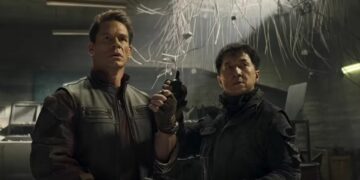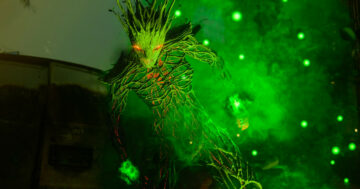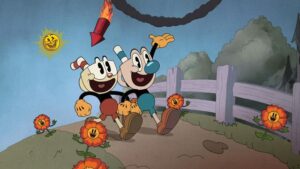More than 40 years after its release, Raiders of the Lost Ark is still my No. 1 argument for seeing a movie in a movie theater. It’s the best example of bona fide Hollywood movie magic, the kind that becomes a lifelong memory. I saw Raiders in its first week of release back in 1981, when I was 7 years old. Raiders, for me, doesn’t begin with Indiana Jones running away from a rolling boulder, or grabbing a seaplane’s pontoon under a hail of arrows and blowgun darts. It begins with my dad cooking round steak in an electric skillet on a late-spring Saturday evening, with Siskel and Ebert on PBS at 6:30, raving about this revival of amazing high adventure inspired by 1950s serials.
Dad clapped his hands and told me and my brother, “Hot damn! Boys, we are gonna go see that.” Mom dressed us in church clothes to see Raiders and then go to a nice dinner in a bigger city. We wore the same jackets and ties to Sunday school the next day. (And after Raiders’ Old Testament finale, I sat ramrod straight when the church lady read us the story of Job, the only dude to survive being called out by God.)
The real catalyst of an Indiana Jones movie has always been what viewers bring to the theater before the opening credits roll. So I was one of the fans walking into Indiana Jones and the Dial of Destiny shouldering some preemptive resentment about how the franchise was exploiting my childhood nostalgia by bringing Indy back to the screen one more time. But when Dial’s credits rolled, I had only a nonplussed, middle-distance stare as my best friend asked what I thought.
“That was… actually good?” I finally said.
“Yeah… I think it was,” he replied.
With the understanding that nothing overcomes the nostalgia of the first time you watched a treasured movie hero do their thing, I can accept that Indiana Jones and the Dial of Destiny still checks all the boxes on my menu of demands for a proper Indy movie.
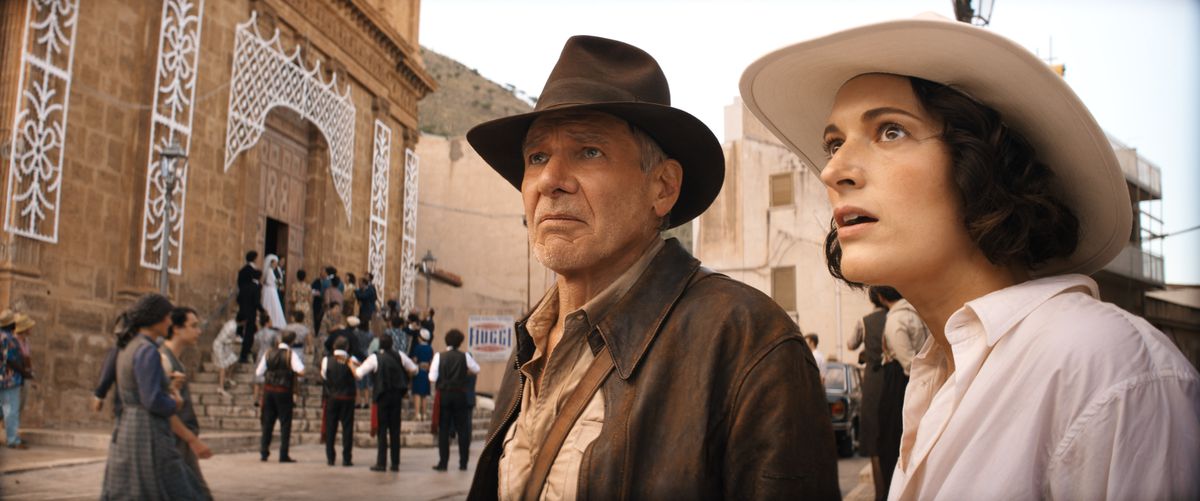
It sure didn’t sound like it would, heading into its premiere weekend. Reviews, particularly after the film premiered at Cannes, bagged on it for leaning too hard into cameos and callbacks. Redditors and YouTubers, knives drawn as always for any culture-war topic, complained that Harrison Ford portrayed a sad, broken man, and that new character Helena Shaw (Phoebe Waller-Bridge) was a detestable sociopath whose only point was to emasculate Jones.
I strongly disagree on both points. Waller-Bridge’s character may not be admirable, but crucially, she returns the series to where it began: As archaeologists, she and Indy are technically grave robbers of questionable methodology. Director James Mangold and writers Jez Butterworth, John-Henry Butterworth, and David Koepp kept this arc from any problematic colonialism/cultural-theft angle by putting the McGuffins in Nazi hands and in an ancient Greek tomb. Thus we get the same cynical, borderline antiheroic fortune-and-glory motivation that begins Raiders, without the kind of sociological squeamishness that provokes online duels. Points to Mangold and his team.
That’s important, because even action heroes have to take some kind of emotional journey, if their characters are going to be worth a damn. The journey Indiana Jones must make in every movie is one from nonbeliever to believer. That’s what earns the happy ending as John Williams’ classic Raiders march builds up and soars.
- In Raiders of the Lost Ark, Indy is convinced of the Ark of the Covenant’s existence and authenticity, but only as an academic or historical matter. “It’s a radio for speaking to God!” Belloq pleads in the Cairo bar. “You want to talk to God? Let’s go see him together, I’ve got nothing better to do,” Jones snarls, almost blasphemously. It takes the Angel of Death, reminding the Nazis that God shall not be mocked, to prove the Ark’s supernatural qualities to him.
- In Temple of Doom, chronologically a prequel, Indy is skeptical that a lingam stone, stolen from a desiccated Indian village along with its children, actually has any mystical properties to protect the people or keep their farmland fertile. Much less could it actually be one of the five Sankara stones (a myth invented for this movie). Fast-forward to the scene at the collapsed bridge, when Indy furiously chants Sanskrit and the stones burst into flame, dooming Mola Ram. At the end, Jones warmly agrees with a village elder about his stone’s importance: “Yes, I understand its power now.”
- The Last Crusade is another mission to stop Hitler, first and foremost. Indy has spent most of his life resenting his father’s pursuit of the actual Holy Grail, to the exclusion of his family. “This is an obsession, Dad; I never understood it,” he seethes. “Neither did Mom.” Then Indy makes a literal leap of faith, uses the Grail to save his father, and becomes obsessed with recovering the cup himself, before his father tells him to let it go.
- Kingdom of the Crystal Skull’s fatal flaw is that both its McGuffin and its surrounding mythology are complete science fiction. So there’s even less for the audience to either disbelieve or believe in than in Temple of Doom. Suspension of disbelief is crucial to an Indiana Jones story, but Crystal Skull goes forward with no structure to support or enable it. The movie makes a lot of other dumb narrative mistakes, but that’s its biggest shortfall: Jones’ journey from disbeliever to believer, if it even happens, is completely lost.
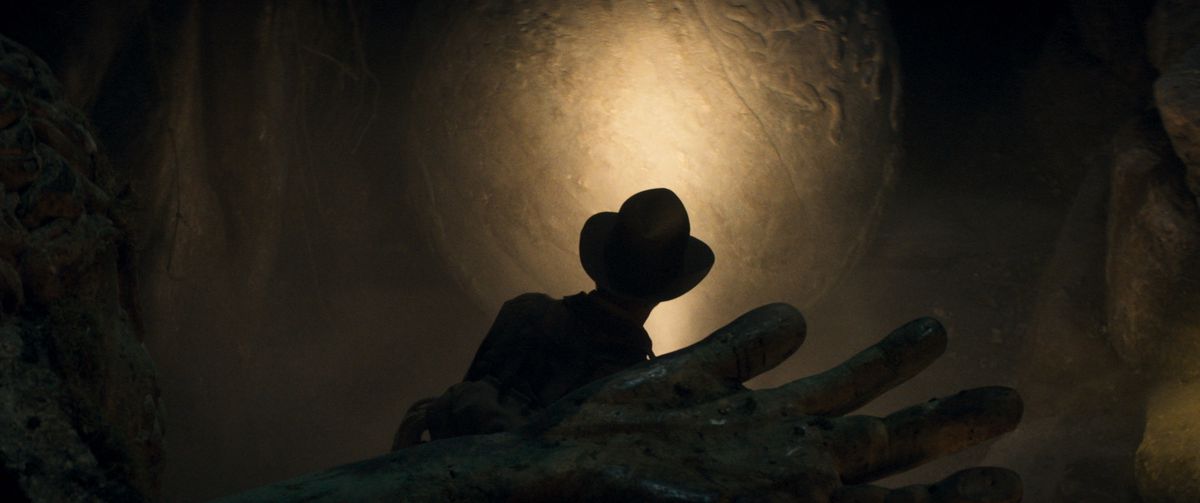
Which brings us back to The Dial of Destiny. The plot device here is completely different in appearance (and function) from the actual, historical Antikythera mechanism, but at least it has an anchor in reality. Neither the audience nor Indiana Jones really believe it enables time travel, though. He relates to the chunk of the mechanism only as a malefactor that drove a friend insane. In a flashback sequence, when Basil Shaw (Toby Jones) raves about “fissures in time” (which Jones sneers at), Indy fires back, “The proof is what makes it science!”
Indiana Jones gets his proof. In fact, this is the central and most meaningful conflict in any Indiana Jones story — when all is revealed, and the humanist, scientist Indy realizes just how small he is against the cosmos he’s exploring. That kind of point has to be delivered with a velvet hammer — with full impact, but a soft, subtle touch.
Here, The Dial of Destiny succeeds thanks to its remarkably restrained depiction of time travel, especially considering all the wish fulfillment Mangold could have indulged. Who knew time travel is a lot messier than just dialing up coordinates on a flux capacitor? Dial’s version of time is a single strand, with fixed loops backward and forward. Nonetheless, experiencing all this and understanding what time means so stuns Indy that he’s willing to give up the life he has in the present day to remain in ancient Sicily. After decades of seeing the impossible, he’s actually experienced the most impossible — time travel.
Once again, Indiana Jones and the Dial of Destiny takes its hero from disbeliever to rapturous believer. When the story toes that line, regardless of what Waller-Bridge, Mads Mikkelsen, or any of the other supporting characters do, Dial of Destiny sings the loudest as an honest-to-God Indiana Jones film.
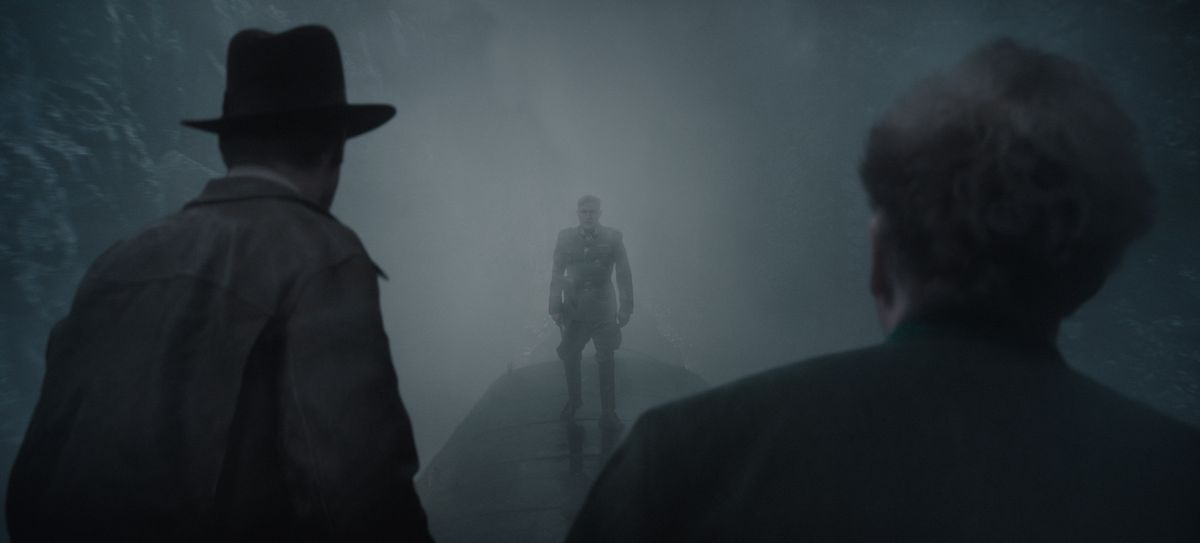
I’ve read so much complaining about how Dial’s third act challenges the audience’s suspension of disbelief, as if it wasn’t challenged in lesser scenes from the first four movies. (Swimming across the open sea to stow away on a submerging U-boat? Escaping an unpiloted airplane with an inflatable raft as a parachute?) The complaints ignore a key detail that invites viewers to suspend their disbelief: This is a real object. The scientists who first studied it said it was too far ahead of its time to have been found in an ancient Roman shipwreck. Could it actually be evidence of time travel?
In either case, there’s an element of real history, and suspension of disbelief in real life, for viewers to lean on in a theatrical flight of fancy, before the film makes a grand leap into the paranormal — like every other Indiana Jones film.
Other things make Dial of Destiny rightfully an Indiana Jones film, more than just fistfights, or Indy flashing a bullwhip, or people driving antique vehicles beyond their limit. There’s Jones’ overt vulnerability in every action sequence. There’s also the obligatory moment of moral contempt, which recenters Indy’s character, and ennobles his pursuit. In Dial of Destiny, it’s when Helena is a bit too cavalier and self-congratulatory about the escape she engineered from Jürgen Voller (Mikkelsen) and his thugs. “They just killed my friend,” Jones says, which brings the moment up short for antiquities hustler Helena and her streetwise fixer Teddy (Ethann Isidore).
For those who feel Indy is too sad, too angry, or too emasculated in Dial of Destiny, here’s a counterargument: He earns all of his emotions in this movie, thanks to some well-placed foreshadowing. My God, this is a man at the end of his career. He’s cheated death and been beaten senseless as a job description. His son died in Vietnam, destroying his marriage. “Everything hurts,” he growls to Helena as they struggle their way into Archimedes’ tomb. He doesn’t just mean physically.
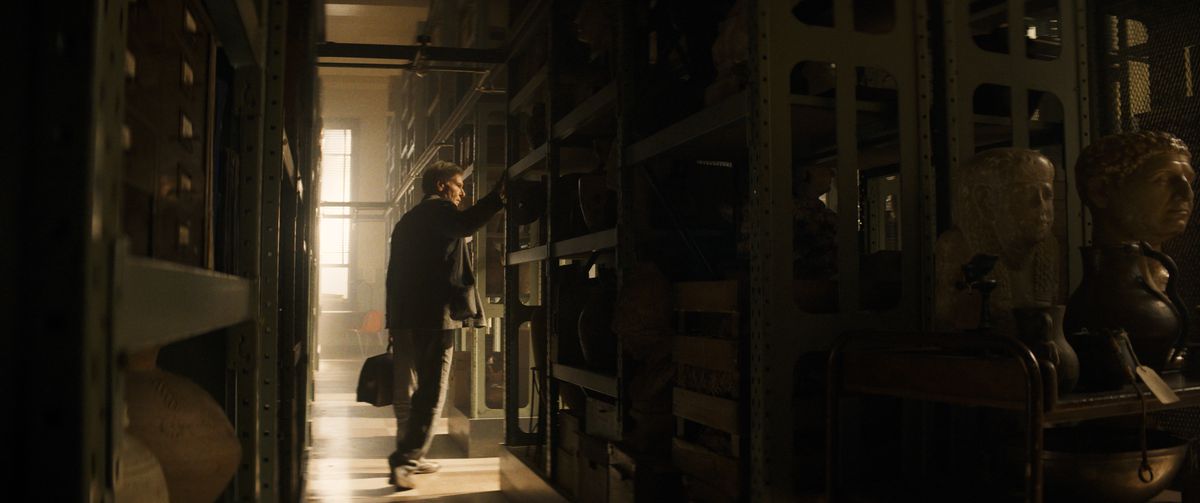
Perhaps Dial of Destiny isn’t the best of the five Indiana Jones films; it doesn’t have to be. After all, Raiders was sui generis, which I think is Latin for “new IP,” so anything following it is going to be derivative by definition. If Dial makes any real filmmaking stumble, it may be that the visual callbacks (to Sallah, to Marion, to the scenes they shared in 1981) are so overt, its real narrative heritage seems buried by comparison.
But the DNA of the rest of the Indy movies is there, even if you have to excavate a little to find it. When I finished digging, at the end of the film, I realized that Indiana Jones and the Dial of Destiny gave me everything I expect from an Indiana Jones movie.
And even if Dial of Destiny didn’t make me feel exactly the way I did when I was sitting in a theater with my family 42 years ago, I’m still struck by how much I’m thinking about the film now, a week after seeing it. I might even go see it again. It’s a callback to the era in which Indiana Jones was conceived, the era when blockbuster movies and theaters were a perfect match, when me and my best friend would go back to the theater to see something two or three times, because the movie was… actually good.
- SEO Powered Content & PR Distribution. Get Amplified Today.
- PlatoData.Network Vertical Generative Ai. Empower Yourself. Access Here.
- PlatoAiStream. Web3 Intelligence. Knowledge Amplified. Access Here.
- PlatoESG. Automotive / EVs, Carbon, CleanTech, Energy, Environment, Solar, Waste Management. Access Here.
- BlockOffsets. Modernizing Environmental Offset Ownership. Access Here.
- Source: https://www.polygon.com/23785770/indiana-jones-dial-of-destiny-is-good-fan-review
- 1
- 30
- 40
- 7
- a
- About
- academic
- across
- act
- Action
- actual
- actually
- admirable
- after
- again
- Against
- ago
- ahead
- Airplane
- All
- along
- also
- always
- amazing
- an
- ancient
- and
- Angel
- Another
- Antiquities
- any
- Anything
- archives
- ARE
- Ark
- as
- At
- audience
- authenticity
- away
- back
- backs
- bad
- BE
- because
- becomes
- been
- before
- began
- begin
- being
- believe
- believer
- BEST
- Better
- between
- beyond
- bigger
- Biggest
- Bit
- blockbuster
- Books
- both
- bring
- bringing
- brings
- broken
- builds
- buried
- but
- by
- called
- CAN
- Career
- case
- Catalyst
- central
- challenged
- challenges
- character
- characters
- Checks
- Children
- church
- City
- Classic
- collapsed
- comparison
- complaints
- complete
- completely
- conflict
- considering
- convinced
- cooking
- corner
- corpse
- Cosmos
- could
- Credits
- crucial
- Crystal
- David
- day
- death
- decades
- definition
- delivered
- demands
- derivative
- description
- Destiny
- detail
- device
- DID
- died
- different
- dinner
- Director
- dna
- do
- drawn
- driving
- either
- Electric
- element
- Emotional
- emotions
- enable
- enables
- end
- era
- escape
- especially
- even
- Evening
- Evergreen
- Every
- everything
- Evidence
- exactly
- Example
- experienced
- experiencing
- Exploring
- fact
- family
- fans
- far
- farmland
- feel
- Fiction
- Film
- filmmaking
- films
- finale
- Finally
- find
- fires
- First
- first time
- fixed
- flashing
- flaw
- flight
- Following
- For
- Ford
- foremost
- Forward
- four
- Franchise
- friend
- from
- fulfillment
- full
- function
- Gaming
- Get
- give
- go
- going
- good
- Grail
- Greek
- had
- hammer
- hand
- hands
- happens
- happy
- Hard
- has
- Have
- he
- heading
- her
- here
- heritage
- Hero
- heroes
- High
- him
- his
- Historical
- history
- Hollywood
- How
- HTTPS
- hunter
- hurts
- i
- if
- IGN
- Impact
- importance
- important
- impossible
- in
- Indiana
- inspired
- into
- IP
- Is
- IT
- ITS
- james
- Job
- john
- jones
- journey
- jpg
- just
- keep
- kept
- Key
- kind
- knives
- lady
- large
- last
- Latin
- Leap
- least
- left
- less
- lesser
- Life
- like
- LIMIT
- Line
- Little
- lost
- lot
- Magic
- make
- MAKES
- man
- Match
- materials
- matter
- May
- me
- mean
- meaningful
- means
- mechanism
- memory
- methodology
- might
- Mission
- mistakes
- mom
- moment
- moral
- more
- most
- motivation
- movie
- Movies
- moving
- much
- must
- my
- Mythology
- narrative
- never
- New
- Next
- Nice
- no
- Nostalgia
- not
- nothing
- now
- of
- Old
- on
- One
- online
- only
- open
- opening
- or
- Other
- out
- particularly
- PBS
- People
- perfect
- plato
- plato data intelligence
- platodata
- platogaming
- Point
- Points
- Polygon
- power
- premiere
- present
- proof
- proper
- properties
- protect
- prove
- pursuit
- putting
- Radio
- Raft
- RAM
- read
- Real
- Reality
- realized
- really
- recovering
- regardless
- release
- REST
- returns
- Revealed
- right
- Roll
- rolled
- Rolling
- rooted
- round
- running
- Said
- same
- saturday
- save
- saw
- says
- scene
- scenes
- School
- Science
- science fiction
- scientist
- scientists
- Screen
- SEA
- see
- seeing
- seems
- Series
- shared
- she
- Short
- single
- Sitting
- small
- So
- some
- something
- son
- sound
- Speaking
- still
- stolen
- Stone
- Stones
- stop
- Story
- straight
- strongly
- structure
- supernatural
- support
- supporting
- sure
- surrounding
- survive
- suspension
- swimming
- Take
- takes
- talk
- tangier
- Teaching
- Team
- technically
- tells
- testament
- than
- thanks
- that
- The
- Theater
- their
- then
- there
- These
- they
- thing
- things
- think
- Thinking
- third
- this
- those
- though
- thought
- three
- time
- time travel
- times
- to
- together
- too
- topic
- touch
- Train
- travel
- turns
- tweet
- two
- under
- Understand
- understanding
- understood
- up
- us
- uses
- Vehicles
- version
- Vietnam
- viewers
- Village
- vulnerability
- walking
- want
- was
- way
- we
- week
- weekend
- were
- What
- when
- where
- WHO
- whose
- Wikipedia
- willing
- with
- without
- Work
- worth
- would
- years
- you
- youtube
- YouTubers
- zephyrnet
